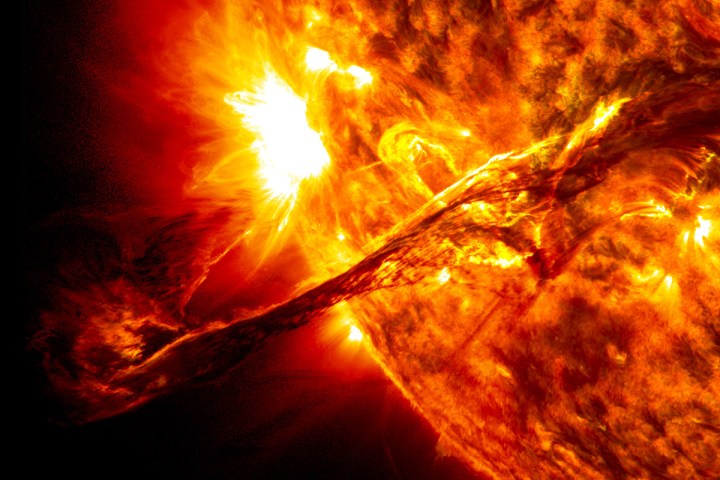
Launched in 2010, the Solar Dynamics Observatory completes the acrobatic maneuver so that the spacecraft’s Atmospheric Imaging Assembly instrument module can record a detailed assessment of limb darkening, an optical phenomenon wherein the outside edge of a star appears brighter then the interior.
The spin is needed due to the unpredictable nature of the sun and its solar activity. With the continuous solar flares and electromagnetic activity, the sun never appears as perfectly spherical.
By turning around on a centralized axis, the Solar Dynamics Observatory can better capture minute detail around the outer edge of the sun, providing a clearer map for its onboard Helioseismic and Magnetic Imager (HMI) to take precise measurements. Normally, humans are unable to view the extreme ultraviolet wavelengths that the below graphic captured. But thanks to NASA colorizing these otherwise unseen visuals, we can see firsthand the sun as the SDO does during its rotation.
“The solar surface is dynamic, leading to occasional distortions,” explained Lina Tran, in a NASA post about the event. “This makes it hard for HMI to find the sun’s edge when it’s perfectly still. HMI’s biannual roll lets each part of the camera look at the entire perimeter of the sun, helping it map the sun’s shape much more precisely.”
The information gathered from these biannual rotations help scientists better predict solar activity, such as eruptions of solar material and radiation activity — critical events that can be a hazard to satellites and astronauts in orbit.
It’s not often we get to see a sun-ersault, so take in the visuals and keep in mind the incredible chaos happening on the surface of that big ball of plasma in the sky.
Editors' Recommendations
- Help NASA in its quest to learn more about our sun
- Remarkable imagery shows NASA probe as it’s hit by a solar storm
- How to watch NASA launch next-gen weather satellite to space tomorrow
- NASA announces two new missions to study the sun
- NASA sets new launch date for Boeing’s Starliner spacecraft




